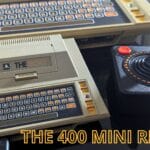Table of Contents
In this video I show how to install a pre-built RetroPie setup image on to your MicroSD Card, HDD or SSD. The process is fairly easy but it can be daunting if you have never done it before. The guide contains everything you need to show how to extract Archive files and the software used, which software to write an image file to your storage and some useful tips on when first booting your Raspberry Pi and RetroPie.
Also, check out our Best RetroPie images for your Raspberry Pi guide where we have a regularly updated list of the best images to install.
How to install a RetroPie setup image video
Software You May Need:
- Archive Extractor – WinRAR : https://www.win-rar.com/ or 7-Zip : https://www.7-zip.org/
- Image Writing Software – balenaEtcher : https://www.balena.io/etcher/
Gear used in this video:
- **CHEAP** 1TB SSD I use for RetroPie installs – https://amzn.to/413jHcR and Sandisk 1TB SSD https://amzn.to/3LSqQIB
- NESPi 4 case – https://amzn.to/3aPLup2 or https://droix.net/product/droix-nespi-4-diy-console?ref=rgb
- DroiX GuliKit King Kong Pro 2 gamepad – https://droix.net/product/gulikit-kingkong-2-pro?ref=rgb
Step by step RetroPie setup image install text guide
Once you have downloaded the RetroPie image files, they may be in an archive format such as .rar. You will first need to extract the archive to get an image .img file.
If you do not have an archive extractor then you can download 7zip.
Right click on the file and depending which software you used, you will see options to extract the archive. Here they are for both WinRAR and 7zip. Choose Extract Here and it will start to extract the file.
Depending on the size of the files and your drive speed, this may take some time. So while you are waiting, check out some more of our videos 🙂
Once the extraction process has completed, you should now see a .img file in the same folder.
Now you can write the image file to your Raspberry Pi storage. I recommend Balena Etcher for writing images as for me at least it is a bit faster than others and it’s also available on Mac and Linux.
Connect the Pi storage to your PC and run Etcher.
Choose Flash from File and it will bring up the file browser. Locate and select the image .img file.
Now click on Select Target. It should hide drives that are your Windows drive for example but it may not be 100% accurate. You need to select the one that is your Micro SD Card, Hard drive or SSD. It won’t be the same name as mine, so check the drive size matches up in particular.
Make sure you are 100% sure it is the correct drive, otherwise you could end up writing over your main drive for example.
Click on Flash to begin the image flashing process. You will get a warning to ensure you have chosen the correct device. Double and triple check 🙂 And if everything is good, click on “Yes, I am sure” to begin flashing.
Depending on the image size and speed of data transfer from your PC to the storage, the image writing may take some time.Just let it write the image and go and watch some more of our videos.
Once the process is complete, you can close Etcher and safely eject the storage from your PC.
You can now connect the storage to your Raspberry Pi and start the first boot.
The first time you boot up, the software needs to set up a few things such as resizing the disk partition. You need to let the Raspberry Pi do its thing and be patient as in many cases all you will see is a blank screen.
The time it takes can depend on the size of your storage, for example resizing a 250GB partition to 1TB and also the speed of the storage. So just be patient, let it run for 15 minutes or so. It may also reboot the Pi a couple of times in between.
And then it should boot up to retro pie with no issues. Future boots should be faster.
And the final step, enjoy some retro gaming classics.




